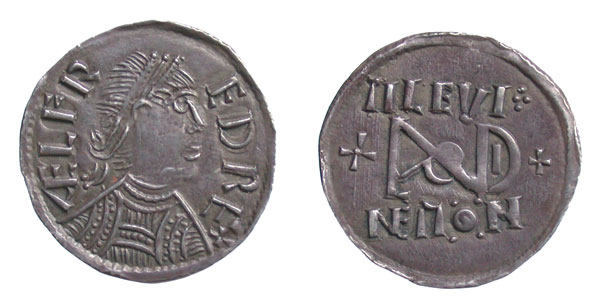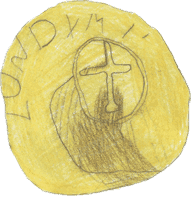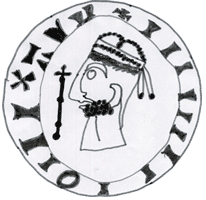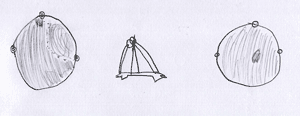What was Anglo-Saxon money like? |
|
| click on these questions to see find out more | |
|
What story does this coin tell us? This coin can tell us:
|
Coin of King Alfred |
| Back to top | |
The History of Anglo-Saxon CoinsEarly Anglo-Saxon Coins AD450-700 When the Romans left, just after AD400, coins stopped being made. The early Anglo-Saxons did not use coins, but they did re-use some Roman coins. Some coins were brought over from the Continent, from places like France. Coins like this were found in the Sutton Hoo burial. During the seventh century (AD600-699) the Anglo-Saxons started to make their own coins. Kings wanted coins to show their importance and wealth, to use in trade, and because mints were profitable. In this early period coins were made of gold and were very valuable so they were not used for everyday tranactions. Most people used barter, which involved exchanging goods rather than coins.
|
 |
7th Century Anglo-Saxon Coin |
|
| Back to top | |
Later Anglo-Saxon Coins (AD700-1066) Coins began to be more widely used during the eighth century (AD700-799), especially in southern and eastern England. Each kingdom had its own coins with their own king's head on those coins. A trader who was travelling between kingdoms would need to change their coins into the local currency - just as people do today when they travel aboard. Over time as there were fewer and fewer kingdoms there were less types of coins but more mints producing coins. Thus there were more coins in circulation. Coins started to be made of silver instead of gold. |
Coin of King Harold (AD1066) |
| Back to top | |
What did the Anglo-Saxons use coins for? The earliest Anglo-Saxon coins were used by rich and important people as gifts, to buy land, to pay fines and taxes and for long distance trade. During the later ninth to eleventh centuries (AD850-AD1066) coins became more common. Therefore more people could use them to buy objects. Today we have coins with lots of different values but the Anglo-Saxons did not have as many types of coins with different values. So to reduce the value of a coin they would cut it in half or in quarters. For example, if a coin was worth one penny but they wanted to buy something worth half a penny then they would cut a penny coin in half and use half the coin. Archeaologists often find these cut coins. |
Scales used for weighting coins |
| Back to top | |




